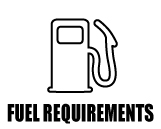Supported Vehicles:
- Volkswagen MK7.5 GTI (MT & DSG)
Map Revision:
- Anti-Theft Mode v102
- Stage0 v102
- Valet Mode v102
- Stage1 91 v103
- Stage1 93 v103
- Stage2 91 v102
- Stage2 93 v102
- Stage3 91 v102
- Stage3 93 v102
- Stage IS38 91 v102
- Stage IS38 93 v102
Map Availability:
- Download from the COBB Tuning Volkswagen GTI OTS Map Database.
Required Accessport Firmware:
Drivetrain Considerations
Running a stage 2 map on a vehicle without an upgraded clutch or DSG tune may cause slipping or damage to your clutch/clutch pack.
COBB Custom ECU Features
- COBB Custom Features: Burnout Mode on MK7 Vehicles
- COBB Custom Features: How to Use Flat Foot Shift on MK7 Vehicles
- COBB Custom Features: Launch Control on MK7 Vehicles
- COBB Custom Features: COBB Traction Control on MK7 Vehicles
Map Version Notes:
Stage 1 Maps
- Stage1 91
- Fuel Requirements : 91 octane or better
- Intake Requirements : Stock airbox with stock air filter, drop-in replacement, or COBB Tuning SF Intake System
- Exhaust Requirements : Stock exhaust or upgraded cat-back exhaust
- Boost level : ~22.5 psi peak boost pressure tapering down to ~13psi as you approach the 6800RPM redline, +/- ~2psi.
- Stage1 93
- Fuel Requirements : 93 octane or better
- Intake Requirements : Stock airbox with stock air filter, drop-in replacement, or COBB Tuning SF Intake System
- Exhaust Requirements : Stock exhaust or upgraded cat-back exhaust
- Boost level : ~23.5 psi peak boost pressure tapering down to ~14psi as you approach the 6800RPM redline, +/- ~2psi.
Stage 2 Maps
- Stage2 91
- Fuel Requirements : 91 octane or better
- Intake Requirements : COBB Tuning SF Intake System
- Exhaust Requirements : Stock exhaust or upgraded cat-back exhaust
- Upgraded FMIC : AMS Performance Front Mount Intercooler GTI
- Upgraded Clutch(6MT), DSG Software recommended.
- Boost Level : ~24 psi peak boost pressure tapering down to ~15 psi as you approach the 6800RPM redline, +/- ~2psi.
- Stage2 93
- Fuel Requirements : 93 octane or better
- Intake Requirements COBB Tuning SF Intake System
- Exhaust Requirements : Stock exhaust or upgraded cat-back exhaust
- Upgraded FMIC : AMS Performance Front Mount Intercooler GTI
- Upgraded Clutch(6MT), DSG Software recommended.
- Boost Level : ~25.5 psi peak boost pressure tapering down to ~16 psi as you approach the 6800RPM redline, +/- ~2psi.
Stage 3 Maps
- Stage3 91
- Fuel Requirements : 91 octane or better
- Intake Requirements : COBB Tuning SF Intake System
- Exhaust Requirements : COBB Tuning Turboback
- Upgraded FMIC : AMS Performance Front Mount Intercooler GTI
- Upgraded Clutch(6MT), DSG Software recommended.
- Boost Level : ~26 psi peak boost pressure tapering down to ~15 psi as you approach the 6800RPM redline, +/- ~2psi.
- Stage3 93
- Fuel Requirements : 93 octane or better
- Intake Requirements : COBB Tuning SF Intake System
- Exhaust Requirements : COBB Tuning Turboback
- Upgraded FMIC : AMS Performance Front Mount Intercooler GTI
- Upgraded Clutch(6MT), DSG Software recommended.
- Boost Level : ~27.5 psi peak boost pressure tapering down to ~16 psi as you approach the 6800RPM redline, +/- ~2psi.
Stage IS38 Maps
- Stage IS38 91
- Fuel Requirements : 91 octane or better
- Intake Requirements : COBB Tuning SF Intake System
- Exhaust Requirements : COBB Tuning Turboback
- Upgraded FMIC : AMS Performance Front Mount Intercooler GTI
- Upgraded HPFP internals: Volkswagen fuel pump internals GTI mk7-2015-2017
- Upgraded Turbocharger (Stock IS38)
- Upgraded Clutch(6MT), DSG Software recommended.
- Boost Level : ~27 psi peak boost pressure tapering down to ~21 psi as you approach the 6800RPM redline, +/- ~2psi.
- 6MT Only
- Stage IS38 93
- Fuel Requirements : 93 octane or better
- Intake Requirements : COBB Tuning SF Intake System
- Exhaust Requirements : COBB Tuning Turboback
- Upgraded FMIC : AMS Performance Front Mount Intercooler GTI
- Upgraded HPFP internals: Volkswagen fuel pump internals GTI mk7-2015-2017
- Upgraded Turbocharger (Stock IS38)
- Upgraded Clutch(6MT), DSG Software recommended.
- Boost Level : ~29.2 psi peak boost pressure tapering down to ~26 psi as you approach the 6800RPM redline, +/- ~2psi.
- 6MT Only
Non-Performance Maps
- Anti-Theft Mode
- Will not allow vehicle to start
- Valet
- Fuel Requirements:
- 91 octane or better
- Intake Requirements : Stock airbox and stock air filter
- Exhaust Requirements: Stock exhaust
- Boost Targets : Mechanical minimum
- Rev Limiter : 3000RPM
- Fuel Requirements:
*Not intended for aggressive driving*
High Altitude:
A quick note for those of you that live at higher altitudes: it is common for turbocharged cars at higher altitudes to run less boost pressure due to lower air pressure and air density. Your turbocharger has to work harder to compress a less dense air mass compared to the same turbocharger at sea level. This must be factored in when determining if your turbocharger is running the proper amount of boost pressure and not being pushed beyond its efficiency range.
Example: If you live in Denver at 5280 ft. and are trying to run a peak boost pressure of 15 psi, your turbocharger has to work the equivalent of making ~17.5 psi at sea level.
There are barometric compensations within the factory ECU that lower boost targets as you climb in altitude in an effort to keep the turbocharger in its optimal range. The COBB performance maps utilize these compensations and therefore, it is perfectly normal for the final boost / load value to be lower than what is listed for your map.
Revision Notes:
v103 –
- Stage1 91 and Stage1 93 OTS maps have been revised for an over all improved driving experience.
- Adustments made to default CCF Traction control.
v102 –
- Revised map naming for parity.
- Enabled Cobb Custom Features: Traction Control.
v101 –
- Enabled Cobb Custom Features: Launch control and Flat Foot Shift. More details here - COBB Custom Features: Volkswagen MK7
- Flat Foot Shift RPM (Per Gear):
- Burn out mode Rev. Limit: 5000 RPM
- Launch Control Rev. Limit by speed/slot:
- Flat Foot Shift RPM (Per Gear):
v100 –
- Revised ignition timing, primary fueling and boost levels for performance and safety











